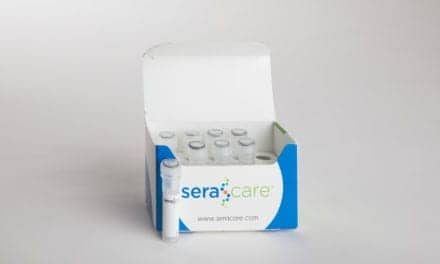This is a companion article to the feature “Streamlining Sample Preparation.”

Table 1. Statistical overview of catecholamine analysis performed using an automated in-tip dispersive extraction method, including standard deviation of the Y-intercept, average slope (n=5), limit of detection, limit of quantitation, and the average coefficient of determination (n=5).
An automated in-tip method was applied to the measurement of catecholamine and metanephrine levels in synthetic urine control samples. Diphenylboronic acid (DPBA) was used as a complexing agent to stabilize and increase lipophilicity for reversed phase retention, while a formic acid/methanol elution solution reversed complexation of the analytes and selectively eluted them from the reverse-phase sorbent with high recoveries.
In less than 15 minutes, a total of 96 samples were processed in the five-step automated process, without the need for solvent evaporation or further dilution prior to LC-MS/MS injection.

Table 2. Accuracy and precision of the automated in-tip dispersive extraction method based on two levels of external quality controls processed on the same day and on a subsequent day.
Extraction efficiencies were higher than 96% for all analytes except dopamine, which resulted in 81% extraction recovery. For all analytes, limits of detection were below 0.25 ng/mL, and limits of quantitation were below 0.70 ng/mL (Table 1).
The calibration was linear over more than four orders of magnitude (R2 >0.998), with concentrations ranging from 0.5 to 1000 ng/mL. Replicate analysis of two different levels of synthetic urine controls demonstrated coefficients of variation less than 8% (Table 2).




